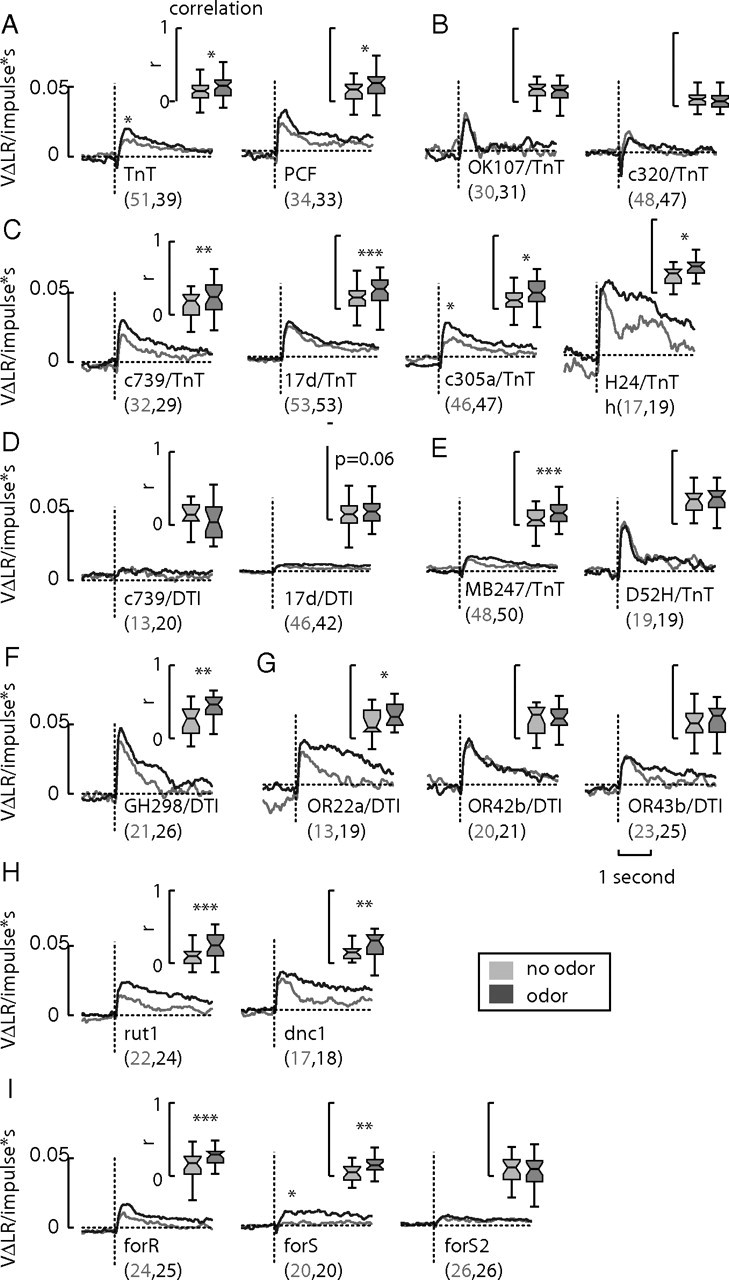Figure 5.

Transgenic yaw filters. A, B, Control lines UAS-TnT and PCF exhibit wild-type yaw OMOR (A), whereas MB lines UAS-TnT+/−; OK107-gal4+/− and c320-gal4/UAS-TnT show a deficit in olfaction-dependent modulation of the yaw filters (B). C, Expressing TeTxLc in the gal4-lines targeting single MB lobes, such as c739-gal4 (α/β), 17d-gal4 (α/β), c305a-gal4(α′/β′), and H24-gal4 (γ), does not have a significant impact on OMOR. D, Expressing DT with c739-gal4 and 17d-gal4 results in animals with highly reduced yaw filters. E, Lines with wider MB expression, simultaneously targeting the α/β and γ lobes, do not result in a loss of OMOR in the case of MB247-gal4 but do result in a loss of OMOR in the case of D52H-gal4. F, The line GH298-gal4+/−; UAS-DTI+/− exhibits robust OMOR, indicating that the antennal lobe local interneurons are not required. Similarly, expressing DT in the olfactory receptor neurons labeled by OR22a-gal4 and OR43b-gal4 has no effect on OMOR. G, The line OR42b-gal4+/−; UAS-DTI+/− exhibits a loss of OMOR. H, Phosphodiesterase mutant dunce and adenylate cyclase mutant rutabaga both have normal yaw OMOR, as does the rover variant of the for allele. I, The sitter variant has very little OMR in the absence of odor and the S2 variant exhibits a large decrease in the magnitude of the yaw filter and a loss of OMOR. *p < 0.05, **p < 0.01, ***p < 0.001. An asterisk over the filters indicates a significant difference in peak height. The numbers listed after the name of the line indicates the N in the no-odor and odor conditions, respectively.
